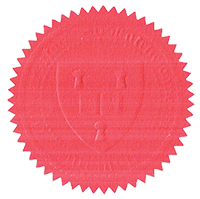[dropcap]A[/dropcap]utumn is in the air: leaves are falling, Starbucks just brought back the PSL, and the admissions cycle for Ontario law schools is now open. For the over 4,000 students who annually apply to Ontario law schools through the Ontario Law Schools Application Site (OLSAS), this means completing admissions essays and a biographical ‘sketch,’ taking the law school admissions test (LSAT), and gathering academic and character references.
The process can be confusing, stressful, and, at times, completely overwhelming. The Varsity spoke to admissions committees of several law schools and current students pursuing their Juris Doctor (JD) degrees about the admissions experience and the steps involved.
How much does your GPA matter?
It is well-known that law schools look for high academic achievers in making admissions decisions. However, cumulative grade point averages (CGPA) may not be the be-all, end-all to your application.
 Alissa Cooper, Manager of Admissions and Financial Services at Osgoode Hall Law School at York University, described the admissions process at Osgoode as “completely holistic,” with each application evaluated in its entirety and no specific weights assigned to particular factors, such as CGPA.
Alissa Cooper, Manager of Admissions and Financial Services at Osgoode Hall Law School at York University, described the admissions process at Osgoode as “completely holistic,” with each application evaluated in its entirety and no specific weights assigned to particular factors, such as CGPA.
Other schools are leaning toward a similar philosophy — personal statements are an application component for each of the seven law schools in the province.
Holistic admissions processes give more weight to non-academic considerations, such as the activities students engaged in outside class. Positive trends, subjective evaluations at specific law schools, and explaining obstacles that inhibited academic performance may all boost an application.
Emily Tsui, an incoming JD candidate at the University of Toronto Faculty of Law, said that her application probably benefitted from displaying a clear upward trend in her studies. Although her first-year performance was not as strong as subsequent years, she thinks sustained progress is key and may compensate for a rougher start.
Short-term deviations or an adjustment period in the beginning of undergrad are often considered; U of T Law, for example, evaluates only the top three full-time years of undergraduate studies and Western Law places an emphasis on the last two years of studies.
Alexis Archbold, Assistant Dean of the JD program at U of T Law, explained that students can use their optional essays to clarify circumstances which may have temporarily affected their academic performance, or to provide compelling reasons for an overall less competitive academic record.
Even with these considerations, the question remains: what makes a competitive applicant? Most law schools specify an A- average of 80–84 per cent or a 3.7 CGPA to be highly competitive. Schools that have released statistics for the incoming class generally confirm this standard: Osgoode reports a median CGPA of 3.67 for its entering class, Queen’s is 82.1 per cent, and University of Toronto is 86.9 per cent.
So what is the LSAT, anyway?
Your LSAT score, which ranges on a scale from 120–180, is one of the most crucial factors on law school applications, even within the holistic admissions processes. The standardized test is offered four times per year, in February, June, September, and December through the Law School Admission Council (LSAC).
For most law schools in Ontario, including U of T and Osgoode, the last accepted LSAT administration date is in February of the year of entry — for example, for those hoping to matriculate in September 2017, the last acceptable LSAT date is February 2017. However, writing the latest possible LSAT administration may render you ineligible for other considerations, such as Osgoode’s Income Contingent Loan Program.
The importance of the LSAT varies across law schools in the province. For example, Archbold noted that the LSAT in conjunction with the applicant’s CGPA makes for two thirds of the scoring criteria for admission to U of T. Median LSAT scores of incoming classes in 2015 ranged from the sixty-fourth percentile at Windsor Law to the ninety-fifth percentile at U of T Law.
varies across law schools in the province. For example, Archbold noted that the LSAT in conjunction with the applicant’s CGPA makes for two thirds of the scoring criteria for admission to U of T. Median LSAT scores of incoming classes in 2015 ranged from the sixty-fourth percentile at Windsor Law to the ninety-fifth percentile at U of T Law.
There is a plethora of resources available for LSAT studying, from self-study books of past tests and strategies to courses with professional test prep companies. Allan Cocunato, a second year JD candidate at Osgoode, recommended starting early — study for several hours every week a few months in advance,
instead of leaving the studying until the month or week before.
The only way to beat test anxiety, he said, is “consistently performing at the level you’d like to be at for long enough that you know you’ll be able to do it on test day.”
For those looking for additional help but cannot afford paid tutoring or courses, U of T Law’s Access Program (LSAP) may be useful. The program runs free LSAT prep for academically high-achieving students during the summer to prepare them for the fall LSAT administration. It is open to third and fourth year undergraduate students as well as recent graduates who have a cumulative average of at least a B+ or 78 per cent with high financial need. Applications for the upcoming year close in March 2017.
Personal statements and letters of recommendation
The personal statement, an application component required by every law school in Ontario, is where students can explain their choices, aspirations, accomplishments, and performance.
“It’s really important to be genuine in your personal statement,” Cooper said. “Elaborate and reflect on the unique experiences you had in university rather than just listing your accomplishments… Students are also given an optional opportunity to discuss certain factors if they apply, one of them being diversity, and equity factors.”
Archbold stressed the importance of giving the admissions committee the most complete picture of your accomplishments and personality. “Do the optional essay. It’s surprising to me every year how many students opt not to do the optional essay… the more information we have, the better chances are that we are creating a sense of the candidate and make a favourable decision.
She also echoed the
importance
of authenticity. “Try to shut off that voice that says, ‘What do you think I should write? What would the admissions committee be looking for?’ That is important, but it shouldn’t get in the way of making sure what is important, what is genuine to you comes through.”
 During Tsui’s admissions experience, she found it most helpful to organize her personal statement to answer three questions: why ‘you,’ why ‘law,’ and why ‘this law school.’ Answering those three questions effectively allowed her to both highlight her unique personal experiences and convey why she would be a good fit for U of T Law.
During Tsui’s admissions experience, she found it most helpful to organize her personal statement to answer three questions: why ‘you,’ why ‘law,’ and why ‘this law school.’ Answering those three questions effectively allowed her to both highlight her unique personal experiences and convey why she would be a good fit for U of T Law.
Cocunato believes it was helpful to add a creative touch to his personal statement, which he wrote in narrative style to immediately grab the attention of the readers. A creative flair may help set applicants apart in a sea of accomplished applicants.
The admissions timeline
Complete applications are due on the OLSAS on November 1, 2016. At this time, applicants are expected to submit all parts of their applications available to date. In practice, this means submitting transcript and letter of recommendation requests in advance, to ensure that they are received by an appropriate time.
Applicants are also encouraged to specify whether they plan to take another LSAT administration later and submit those scores when available. If applicants are still enroled in undergraduate studies, they may also submit first-semester grades past the deadline.
Offers for admission are generally made on a rolling basis. U of T Law makes several rounds of offers, beginning in early December and continuing to January and February; most applicants can expect to hear a decision by late February to March.
Osgoode makes offers on a continuous rolling basis. Cooper explained that offers begin to go out in December, but the bulk of acceptances are made in the end of January to the beginning of February. It is possible to receive an acceptance right until June, as many students make a decision on their offers by the April deadline.
The most important thing to do after accepting an offer? The answer from both admissions offices and students was fairly unanimous — relax and enjoy the last summer of peace before an extremely rigorous few years.
“This process doesn’t — and won’t — define you,” said Cocunato. “It’s cool that you’re interested in law, but make sure you’re leaving time to be interested in your friends, your family, your hobbies, and your health, and for occasionally making some mistakes that you’ll laugh at years down the road.”
Tsui, for one, decided to cap off the admissions cycle by deferring her acceptance to the following year and taking time to travel and relax.
Staying sane: balancing applications with other demands
With all of the above considerations in mind, applying to law school is often incredibly stressful. Between spending hours at the library to reach the highest possible LSAT score and crafting compelling personal statements, it may be difficult to stay on top of other academic, professional, and personal responsibilities without feeling completely overwhelmed.
Every applicant has different ways of managing stress and anxiety; it is important to find one that works to avoid burnout.
Cocunato recalls doing everything he could to keep things in perspective while applying. “Most applicants have an idea of where they stand, and those that are unsuccessful can just try again next year,” Cocunato said. “Even then, law school isn’t for everyone, and most people have happy and fulfilling lives without a law degree.”
According to Victoria Wicks, an incoming student at the University of British Columbia’s Peter A. Allard School of Law, she was privileged to have a strong family support system, which she leaned on heavily when trying to manage courses. “It really helps to let the people around you know what your goals are, so they can understand the pressure you’re under and provide the much-needed moral support,” she said.
Equally important is continuing to practice all the time management and scheduling tips that have been helpful to you throughout university. Wicks recounted the strategies that helped her with both academic work and the admissions process: “noting due dates in advance, working backwards to break up tasks into smaller accomplishments, and reassessing your progress status regularly.”
The pros and cons of joint degrees
Some law students also hope to continue studies in their undergraduate field, while others look at combined professional programs. Many law schools in Ontario offer a range of combined programs that law students may take concurrently with their JD to decrease program time and obtain a multidisciplinary perspective.
“I was interested in pursuing business law,” said Dany Horovitz, a JD and Master of Business Administration (MBA) graduate from Western Law and the Richard Ivey School of Business MBA program. “The JD/MBA program at Western/Ivey combines the best business law school in the country with the best business school in the country. It was a no brainer for me on that basis.”
 His admissions process, however, involved several steps that JD applicants did not have to complete, such as an interview with and a separate application to Richard Ivey. Although his high LSAT score was sufficient to waive the graduate management admission test (GMAT) requirement, many joint programs will require a different standardized exam such as the graduate record examination (GRE) for admission.
His admissions process, however, involved several steps that JD applicants did not have to complete, such as an interview with and a separate application to Richard Ivey. Although his high LSAT score was sufficient to waive the graduate management admission test (GMAT) requirement, many joint programs will require a different standardized exam such as the graduate record examination (GRE) for admission.
While joint programs can provide a greater depth and breadth to legal education, they tend to run higher in tuition costs and time spent in school. With many students already juggling a significant debt load, higher tuition costs spread over a greater time out of work can prove prohibitive. However, Horovitz and others like him believe their joint degrees are worthwhile investments.
Is law school for you?
Oftentimes, students experience tunnel vision regarding admissions; they focus more on their chances of acceptance into law school rather than their desire to have a career in law. While it is important to stay on track with the admissions process, it may be helpful to pause and contemplate whether law school is ultimately the right path.
“I think I originally wanted to go law school because I saw it as one of the highest attainable degree[s] and I wanted to pursue it for the accomplishment more so than the actual curriculum,” said Casey Loach, who now works in the field of investment banking. “It also didn’t help that most people in my program (Poli sci) wanted to go to law school so I felt more pressure to go that path as well.”
When Loach had a chance to pursue an MBA to make her application more competitive for law school admissions, she realized that work in business and economics was much more appealing to her.
During the process, the relative prestige or ranking of law schools can sway applicant decisions more than their suitability to the goals a particular applicant intends on pursuing. Allan recommends that prospective applicants tap into all the resources available to learn what each school offers regarding courses, faculty, student life, and financial aid programs.
If you do decide that law school is the right option for you, the main takeaway is: don’t dwell too much on a single factor of your application; be authentic and genuine about your experiences and motivations; and don’t be afraid to reach out to family, friends, and other networks for support when you need it.
Above all else, keep everything in perspective. If law school doesn’t work out, there are plenty of other equally as good options to pursue.
Overview of Ontario law schools
Bora Laskin Faculty of Law at Lakehead University
– Small firm practices
– Aboriginal legal issues
– Natural resource and environmental law
Osgoode Hall Law School at York University
– Leadership in legal education and research
– Internationally-recognized faculty
– Clinical and intensive programs
University of Ottawa
– International and environmental law
– Focus on social justice in legal issues
– Dispute resolution and advocacy
Queen’s University
– Public, criminal, and family law
– Clinical programs and mooting
– Study abroad programs
University of Toronto
– Outstanding employment prospects
– Proximity to Canada’s leading legal and financial markets
– Largest JD/MBA joint program in Canada
Western University
– Small Group Program for first-years
– International exchange programs
– Research intensive academic excellence
University of Windsor
– Focus on access to justice
– Focus on transnational legal issues
– Canadian & American Dual JD Program





